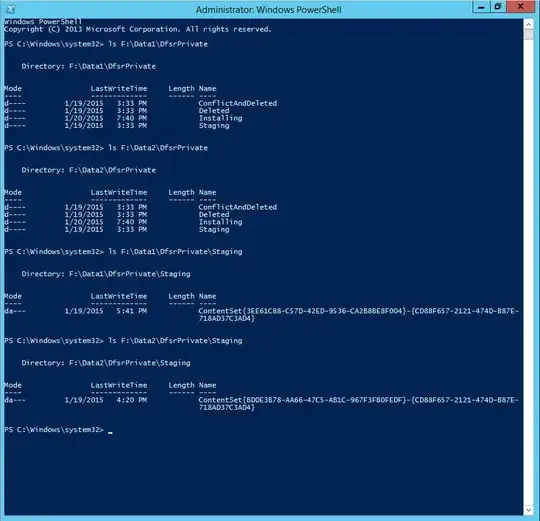Using the same drive letter is not an issue that I have encountered. I have configured multiple servers for DFS and nearly every single time, I have a data volume on D:, followed by a directory structure that's relevant.
I do use the best practice analyzer, following any configuration, as well as Robocopy to preseed any data. Once replication starts, it very quickly finishes the job due to the small percentage of data change. Of course, times vary with data quantity.
The Best Practice Analyzer is a read-only app which won't change your configuration, but will give very salient and direct advice for remediation of any poorly executed configuration. It has saved me quite a few times.
Here is how to use Robocopy to preseed your data, quoting from the Technet Library:
To preseed the replicated files onto the destination server by using
Robocopy
Log on to the destination server with an account that is a member of
the local Administrators group on both the source server and the
destination server. Open an elevated command prompt. To preseed the
files from the source to destination server, run the following
command, substituting your own source, destination, and log file
paths:
robocopy "<source replicated folder path>" "<destination replicated folder path>" /e /b /copyall /r:6 /w:5 /MT:64 /xd DfsrPrivate /tee /log:<log file path> /v
This command copies all contents of the source folder to the destination folder, with the following parameters:
Parameter Description
"<source replicated folder path>" Specifies the source folder to preseed on the destination server.
"<destination replicated folder path>" Specifies the path to the folder that will store the preseeded files.
Important The destination folder must not already exist on the destination server. To get matching file hashes, Robocopy must create the root folder when it preseeds the files.
/e Copies subdirectories and their files, as well as empty subdirectories.
/b Copies files in Backup mode.
/copyall Copies all file information, including data, attributes, time stamps, the NTFS access control list (ACL), owner information, and auditing information.
/r:6 Retries the operation 6 times when an error occurs.
/w:5 Waits 5 seconds between retries.
MT:64 Copies 64 files simultaneously.
/xd DfsrPrivate Excludes the DfsrPrivate folder.
/tee Writes status output to the console window, as well as to the log file.
/log <log file path> Specifies the log file to write. Overwrites the file’s existing contents. (To append the entries to the existing log file, use /log+ <log file path>.)
/v Produces verbose output that includes skipped files.
For example, the following command replicates files from the source replicated folder E:\RF01 to data drive D: on the destination server:
robocopy.exe "\\srv01\e$\rf01" "d:\rf01" /e /b /copyall /r:6 /w:5 /MT:64 /xd DfsrPrivate /tee /log:c:\temp\preseedsrv02.log



